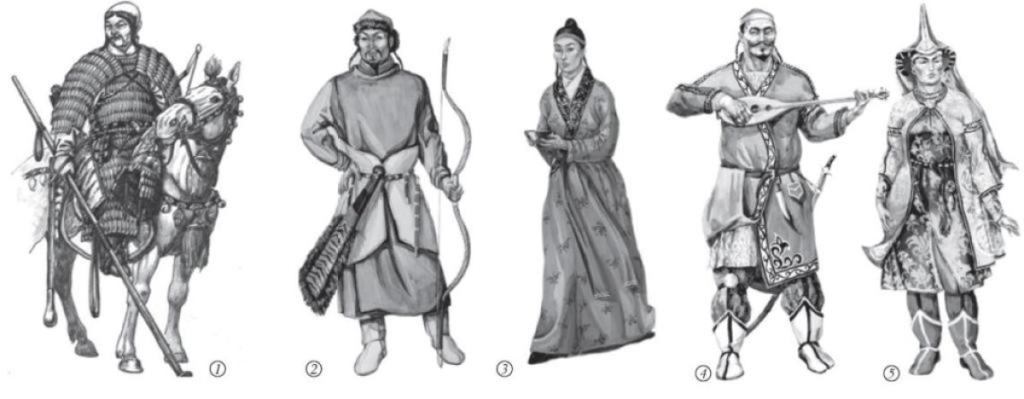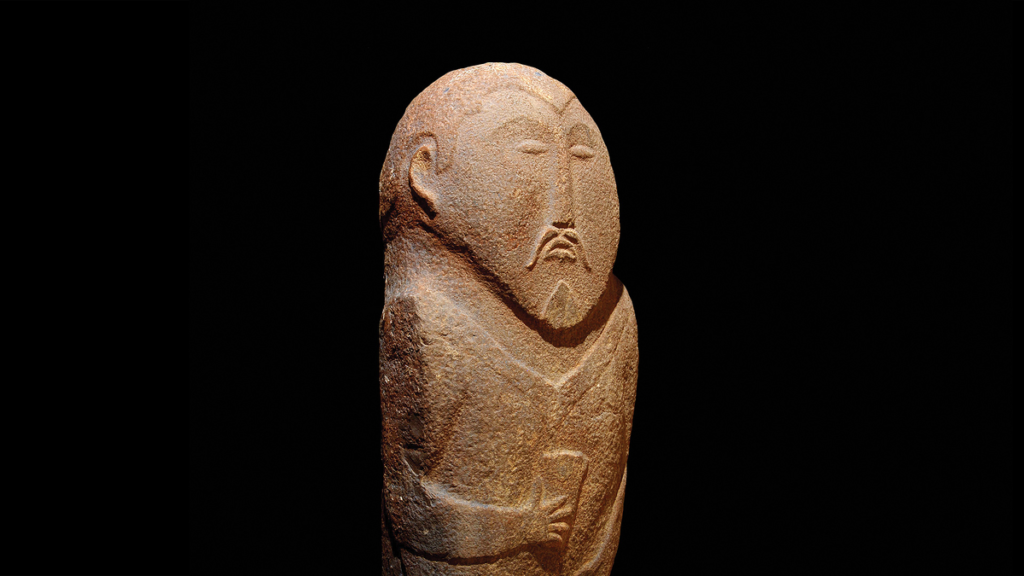The president is right. And a victory over Khazar Khaganate is a very important achievement of ancient Slavs on a way to the power. But Khazar Khaganate is only one of opponents in the great confrontation of Russia with immense and free steppe. And few people know that right in the neighborhood with our irreconcilable and principled enemies, about which it is written in detail earlier, existed no less powerful and formidable Kimak Kaganate. And only usual luck and direction of attention of Kimak Hagans in other places has rescued budding Russia from new collision with an unknown outcome.
For the beginning let me lead a little «background information». So, Kimak Khaganate existed with 750 on 1035 and had two capitals — Imakia (summer) and Hakan-Kimak (winter). Despite the purely nomadic structure of society, on the territory of this state there were many other large cities — places of concentration of traders from all over the world.
The total controlled territory at the peak of power is almost 1.5 million square kilometers. The main languages prevailing in this area are Mongolian and Turkic. That did not exclude multinationality of Khaganate, and also multiconfessionalism on its territory — Islam, Buddhism, Manichaeism and Tengrianism.

Kimak Khaganate — the contemporary of Khazar Khaganate and one more powerful opponent of Russia
If you look at the map of the Kimak Kaganate, it becomes clear why this state is included in a series of articles on the history of countries, states and state formations, once present on the territory of the modern Russian Federation. Simply because it not only «covers» vast territories of modern Kazakhstan, but also extends very far into Southern Siberia.
According to the available data, the Kaganate was «conceived» approximately in the middle of the VIII century by the ancient Turkic people Kimak, who came to the previously uninhabited territories after the collapse of the Eastern Turkic Kaganate. And one of the theories says that the Kimaks are descendants of the Mongolian-speaking tribe Kumosi, but isolated themselves during the boiling events of the VIII — IX century.
Kimaks showed real talent in the matter of state organization of their new habitat. And soon the possessions of the incoming tribe stretched all the way to the Urals, and the Kimak union began to include 7 tribal groups at once (the most numerous group — Kypchaks).

Reconstruction of the appearance of warriors. Kimak Khaganate — the contemporary of Khazar Khaganate and one more powerful opponent of Russia
The basic opponents of Kimak Khaganate — Pechenegian. And it is Kimaks «shifted» the crowd of peoples in the direction of Russia, literally making Pechenegs «flood» and Khazar Khaganate, and become a real problem for the Slavs. Kimak Kaganate itself, having conquered large areas, up to the mountains of Altai and Siberian taiga, not without incidents and «enriching» campaigns, but began to lead quite a stable existence.
Stability attracted new subjects. And in 840, with the collapse of the Uigur Kaganate, a large number of Turkic tribes voluntarily joined the new state. And neighbors — warlike Oguzes, tried to go with the endless campaigns anywhere, but with Kimaks to be friends and trade.
Kimak Kaganate existed also when in the Middle East, already after the destruction of the Khazar Kaganate, the Great Steppe began to be called Desht-i-Kipchak by the name of the most numerous people who lived here. In Russian sources, this territory is known by another name — «Polovtsian Steppe».

Appearance of Kimaks and Kipchaks. Kimak Khaganate — the contemporary of Khazar Khaganate and one more powerful opponent of Russia
But nothing is eternal in this world. And at the very beginning of the XI century Kimak Kaganate, as well as the vast majority of steppe countries and empires, began to collapse from within. There was an «interethnic conflict», in the course of which the Oguzes were displaced by the Kipchaks and Kimaks to the south, and the Pechenegs to the west. The Ugrian tribes, who were forced to leave towards the Siberian taiga, and the Karluks, who went to the southeast, also suffered.
Everything began with the fact that many «national khans» of the Kimak Kaganate began to carry out independent and separatist policy, refusing to obey the central authority of the Kagan. The problem lay in the very structure of the local state power, because the Kagan had his own militia, and each khan, which as if equalized at least military forces in the complete absence of a centralized army.
The Kipchaks were the first to rebel against the centralized power, «pressing» the Pechenegs and Oguzes. Later, the Kipchaks strengthened to such an extent that the former masters — the Kimaks — became dependent on the once subordinate tribe.

Stone sculptures on burials of rulers and warriors. Kimak Khaganate — the contemporary of Khazar Khaganate and one more powerful opponent of Russia
Kipchaks acted for sure and on «long term», sometimes literally one pasture at a time «squeezing» from their neighbors. Over the centuries, this systematic movement to the west turned into a real migration, and the lands near the Irtysh began to become empty.
«No place is empty», — it is not without reason that our people say so. And for a long period — part of the XI and almost the whole XII century, Mongolian-speaking tribes gradually displaced the remnants of the Kipchaks-Kimaks from the upper Irtysh and Altai. In turn, at the very end of the XII century, a huge number of Kimaks moved to Central Asia, and the daughter of the «landless» Kagan, Terken-Khatun, became the wife of the mighty Khorezm Shah Tekesh, and by dynastic marriage the alliance of the peoples was firmly cemented. But it is already another story, for Kimak Kaganate by that time has completely dissolved in time.
In the period of its blossoming Kimak Kaganate was a classical early feudal society. The main activity was nomadic cattle breeding. However, later, on a really immense territory, an early form of agriculture began to develop. The main crops were rice, barley and even wheat.

Kimak Khaganate — a contemporary of Khazar Khaganate and another powerful opponent of Russia
In Kimak Kaganate very much appreciated artisans. The state was famous for its jewelry, leatherwork and metallurgy. Stonemasons and even some primitive sculptors were valued, as a good tradition of Kimaks and Kipchaks is to put stone sculptures on graves of governors and noble warriors (which are many on the territory of Siberia). To all other things quite a few ruins of Kimak cities to the present day are located in a huge area of 1.5 million square kilometers, as a reflection in the present once really powerful state.
